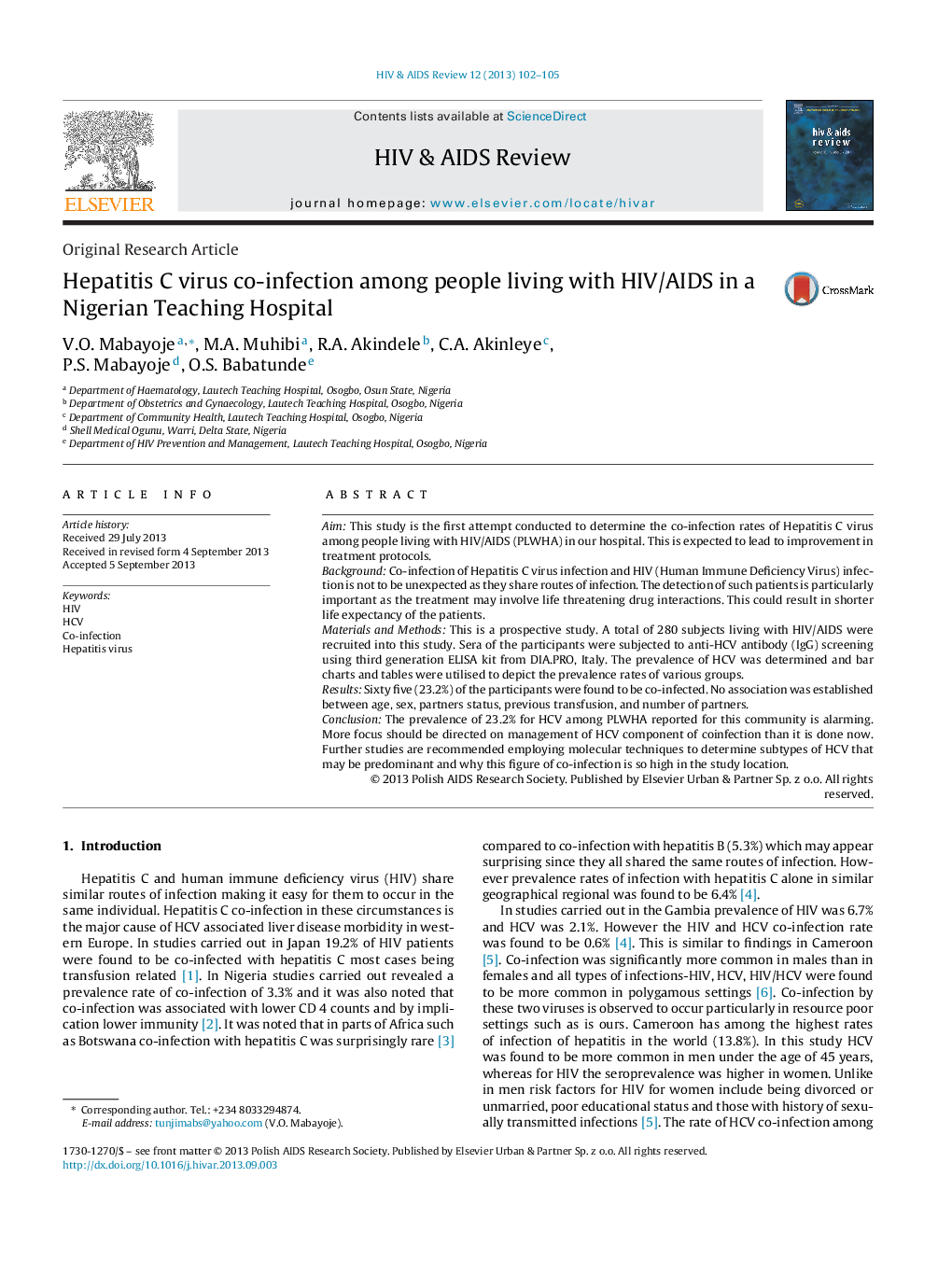| Article ID | Journal | Published Year | Pages | File Type |
|---|---|---|---|---|
| 3332320 | HIV & AIDS Review | 2013 | 4 Pages |
AimThis study is the first attempt conducted to determine the co-infection rates of Hepatitis C virus among people living with HIV/AIDS (PLWHA) in our hospital. This is expected to lead to improvement in treatment protocols.BackgroundCo-infection of Hepatitis C virus infection and HIV (Human Immune Deficiency Virus) infection is not to be unexpected as they share routes of infection. The detection of such patients is particularly important as the treatment may involve life threatening drug interactions. This could result in shorter life expectancy of the patients.Materials and MethodsThis is a prospective study. A total of 280 subjects living with HIV/AIDS were recruited into this study. Sera of the participants were subjected to anti-HCV antibody (IgG) screening using third generation ELISA kit from DIA.PRO, Italy. The prevalence of HCV was determined and bar charts and tables were utilised to depict the prevalence rates of various groups.ResultsSixty five (23.2%) of the participants were found to be co-infected. No association was established between age, sex, partners status, previous transfusion, and number of partners.ConclusionThe prevalence of 23.2% for HCV among PLWHA reported for this community is alarming. More focus should be directed on management of HCV component of coinfection than it is done now. Further studies are recommended employing molecular techniques to determine subtypes of HCV that may be predominant and why this figure of co-infection is so high in the study location.
